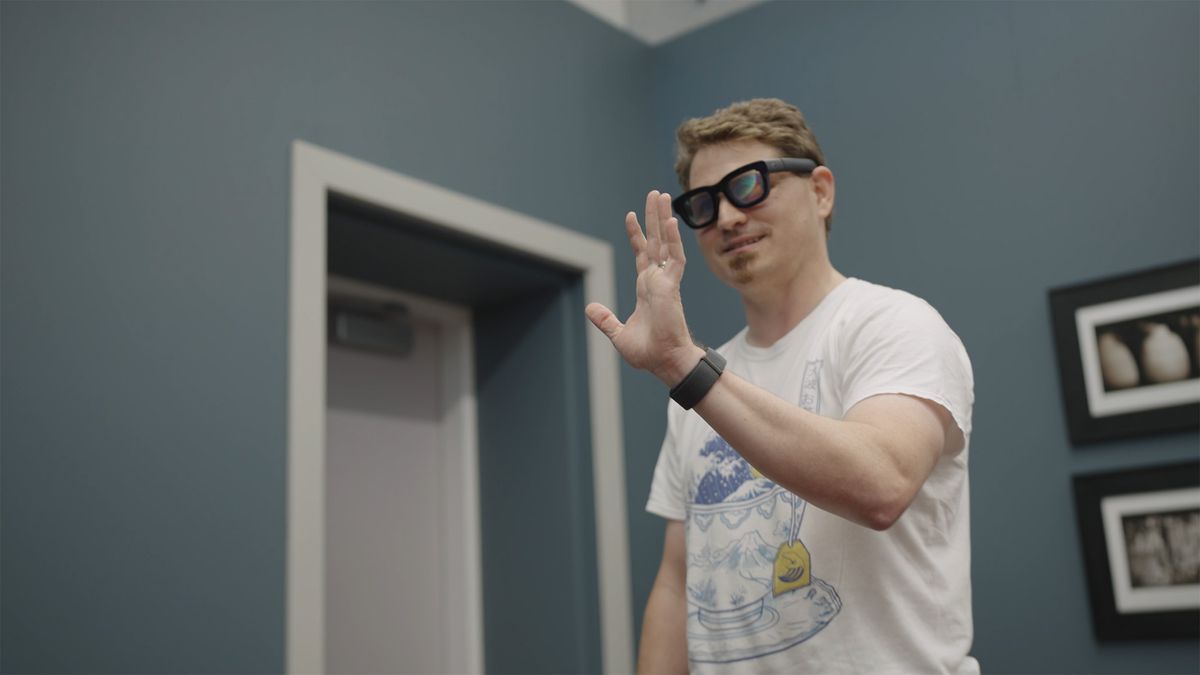The gut’s sensory system is a touchy subject thanks to specialized epithelial cells that line the gut and behave like touch sensors in the skin.1 These cells are sensitive to mechanical stimuli and communicate information about “gut feelings” to neurons in the gut as well as those that send messages to the brain.2 To understand the neuro-epithelial connections that conduct the grand symphony of digestion, a team of scientists at the Mayo Clinic orchestrated a unique collaboration of their own, combining their expertise in microfluidics, organs-on-a-chip, epithelial organoids, enteric nerves, and gut sensing.
Gastroenterologist Arthur Beyder (top left), biochemical and molecular biologist Brooke Druliner (top right), biomedical engineer Alexander Revzin (bottom left), and physiologist and biomedical engineer David Linden (bottom right) combined their expertise to create a new microfluidics cell culture device to study the neuro-epithelial interactions in the gut.
Beyder Lab, Druliner Lab, Mayo Clinic, and Linden Lab.
In a study published in Microsystems & Nanoengineering, the researchers described a new microfluidic coculture platform that mimics the anatomy of gut tissue by modeling neuro-epithelial connectivity.3 This device allows scientists to study the subtle ways in which neurons and epithelial cells interact, which until now has been challenging because of the variable cell culture conditions needed to grow these different cell types.
“In many ways, it recapitulates the [gastrointestinal] system because the cell bodies of neurons within the gut wall are in a different layer, surrounded by a capsule that maintains the microenvironment and allows those axons to grow towards the epithelial cells,” said David Linden, a Mayo Clinic physiologist and biomedical engineer, and coauthor of this study.
The device, constructed by Alexander Revzin, a biomedical engineer at Mayo Clinic, has two separate chambers, one of which holds gut epithelial organoids and the other intestinal neurons. These reservoirs are separated by microgrooves that act as a thoroughfare for thin neuronal projections, supporting interactions between gut epithelial cells and neurons, while keeping the cell bodies and local microenvironments separate.
Epithelia are very conscious of their own environment and space.
– Arthur Beyder, Mayo Clinic.
Using time-lapse microscopy, the researchers found that the cultured colon organoids formed an epithelial layer and that the intestinal neurons sent projections across the microgrooves into the adjacent chamber, where they connected with the epithelial cells. The mere presence of epithelial cells was enough to act as a cellular conductor’s wand to synchronize the biomolecular melody and boost the density of these projections on the epithelial side of the device. “Epithelia are very conscious of their own environment and space,” said Arthur Beyder, a Mayo Clinic gastroenterologist and biomedical engineer, and coauthor of this study. “If we didn’t have epithelia on one side, the neurons grew very differently. We’d like to understand the conversation that happens between these two systems.”
Having worked out the technical details of coculturing gut epithelial cells and neurons, the researchers have their sights set on understanding the structure and function of the connections they form in the future. “I foresee that this first-generation device can be further augmented to support coculture of three and even more distinct intestinal cell types. It represents a solid step toward more complete organs-on-a-chip, that will likely rapidly improve and complexify in the coming years,” said Maksim Plikus, a developmental and cell biologist at the University of California, Irvine, who was not involved in this study. Since other sensory systems, including taste, touch, hearing, vision, and smell, also depend on connections between neurons and epithelial cells, this novel microfluidic device holds promise for understanding sensory transduction beyond the gut.
“Putting us all together and thinking through these things, really opened up those questions about what we could do next and how our different expertise could push this to the next level,” said Brooke Druliner, a biochemical and molecular biologist at the Mayo Clinic, who also coauthored this study. It is precisely these multidisciplinary connections, each team member contributing their own special touch to a complex scientific problem, that creates new knowledge to help understand how the human body senses and responds to the myriad stimuli that connect the inner and outer landscapes of life.














/https://tf-cmsv2-smithsonianmag-media.s3.amazonaws.com/filer_public/34/31/3431771d-41e2-4f97-aed2-c5f1df5295da/gettyimages-1441066266_web.jpg)






Discussion about this post